




NGP by Heteroatom Lone Pair
In this substitution reaction, one group of the substrate participates in the reaction first and hence influences it. The response rate is raised several times as a result of NGP.
The reaction of a sulphur or nitrogen mustard with a nucleophile is a classic example of NGP; the reaction rate is substantially faster for the sulphur mustard and a nucleophile than for a primary or secondary alkyl chloride without a heteroatom. The reaction rate of Ph-S-CH2-CH2-Cl with water is 650 times quicker than CH3-CH2-CH2-Cl.
NGP by Aromatic Ring
According to molecular orbital theory, the reactivity of a benzyl halide is greater because the SN2 transition state has a comparable overlap effect to that of an allyl system.
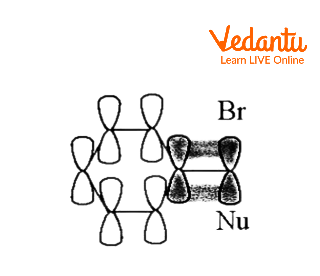
By delocalizing the positive charge, an aromatic ring can create a carbocationic intermediate known as a phenonium ion.

Instead of a straightforward SN2 reaction generating B when the following tosylate combines with acetic acid in solvolysis,
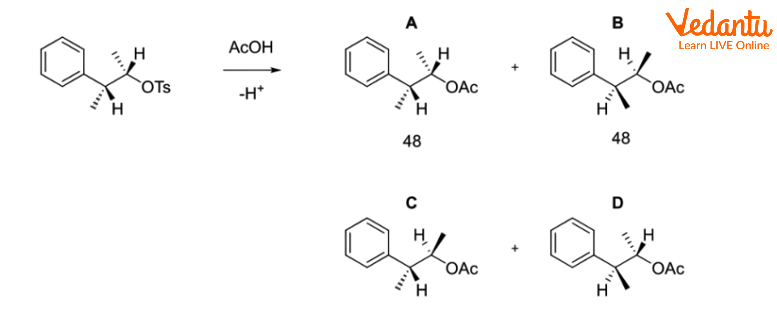
Working as Cyclopropane, Cyclobutane, or a Homoallyl Group
When cyclopropyl methyl chloride is combined with ethanol and water, it produces a combination of 48% cyclopropylmethyl alcohol, 47% cyclobutanol, and 5% homoallylic alcohol (but-3-enol).
This is due to the carbocationic intermediate being delocalized onto several carbons via a reversible ring opening.
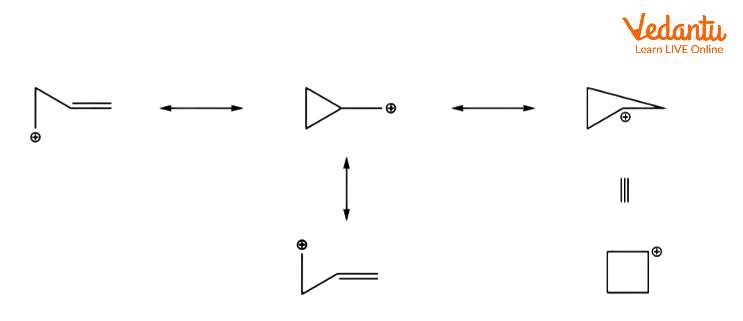
NGP by an Alkane
An alkene's orbitals can aid to delocalize the positive charge of a carbocation, which can help to stabilise a transition state. For example, the unsaturated tosylate will react with a nucleophile more quickly than the saturated tosylate.
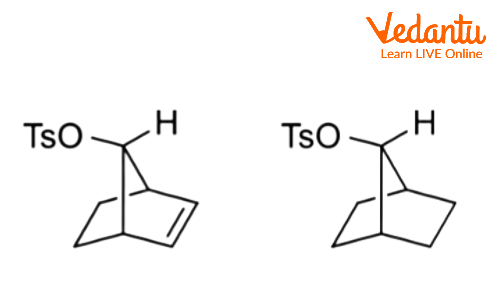
The carbocationic intermediate will be stabilised by resonance, which spreads the positive charge over several atoms. This is seen in the diagram below.

Even if the alkene is further away from the responding centre, it can still operate in this manner. In the following alkyl benzenesulfonate, for example, the alkene can delocalize the carbocation.
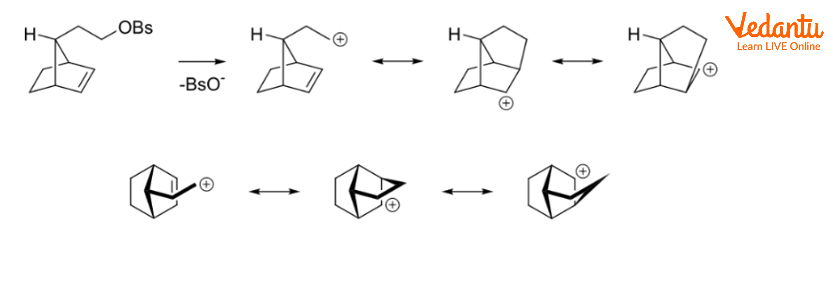
NGP by Aliphatic C–H and C–C Bonds
Charge delocalization can occur when aliphatic C–C or C–H bonds are near and antiperiplanar to the leaving group. Corresponding intermediates are referred to as nonclassical ions, with the 2-norbornyl system being the most well-known example.
Important Questions
1. Which following undergoes nucleophilic substitution only through the SN2 mechanism?
A. Ethyl Chloride
B. Isopropyl Chloride
D. Benzyl Chloride
Answer: (A) Ethyl chloride is the right answer.
Alkyl halides with a less bulky group linked to the halide ion favour the SN2 process. Because ethyl chloride is the least bulky of the possibilities, it will undergo nucleophilic substitution through the SN2 mechanism.
2. Which chemical is easily nucleophilic substituted?
Answer: When the leaving group stabilises and so functions as a weak base, nucleophilic substitution at acyl carbon is simple.
3. Why does benzene easily undertake electrophilic substitution reactions but struggle with nucleophilic substitutions?
Answer: Because of the presence of 6π electrons, benzene acts as a rich source of electrons, making it easily attacked by reagents lacking in electrons. As a result, benzene easily undergoes electrophilic substitution reactions but struggles with nucleophilic replacements.
4. What precisely is a regioselective reaction?
Answer: The benefit of having or breaking a chemical connection in one way over all other potential orientations is known as regioselectivity. Regioselectivity can also be used for other processes, such as adding pi-ligands. Selectivity occurs in carbene insertions, for example, in the Baeyer–Villiger reaction.
Conclusion
It is also conceivable for the reaction's stereochemistry to be aberrant (or unexpected) compared to a typical reaction. While neighbouring groups can influence many organic chemistry reactions (for example, the reaction of a diene such as 1,3-cyclohexadiene with maleic anhydride normally gives the endo isomer due to a secondary effect overlapping of the carbonyl group orbitals with the transition state in the Diels-Alder reaction), this page is limited to neighbouring group effects seen with carbocations and SN2 reactions.
(IUPAC) defines neighbouring group participation (NGP) in organic chemistry as the interaction of a reaction centre with a lone pair of electrons in an atom or the electrons present in a pi bond contained within the parent molecule but not conjugated with the reaction centre. It is common for the reaction rate to rise when the NGP is in use.






FAQs on Neighbouring Group Participation: Mechanism and Consequences
1. Which undergoes nucleophilic substitution with the cooperation of its neighbouring group?
The substitution process is known as intramolecular SNNGP when a nucleophile is present in the reacting molecule. Sulphide, amine, benzene, ester, ether, carboxylate, halide, and other groups exhibit neighbouring group involvement. In this case, all four compounds indicate neighbouring group membership.
Neighbouring group participation in nucleophilic substitution reactions is the addition of a fresh reaction intermediate by a substituent that bonds to the reaction centre.
When sulphur mustard and a nucleophile are combined, the reaction rate is significantly greater than it would be for a primary or secondary alkyl chloride without a heteroatom.
2. What is a rearrangement reaction?
"rearrangement" refers to two distinct types of organic chemical processes. A rearrangement might entail the one-step movement of an H atom or a bigger molecule fragment within a short-lived intermediate.
On the other hand, a rearrangement may be a multi-step process that includes the migration of an H atom or a bigger molecular fragment as one of its phases.
Many rearrangements include the migratory group connecting to one of the atom's immediate neighbours. This form of rearrangement is known as [1,2] - rearrangements or [1,2] - shifts.
3. What do you mean by a reaction's coordinated path?
A coordinated reaction is a chemical process in which all bond breaking and formation occur in a single step. There are no reactive or other high-energy unstable intermediates present. The reaction is considered to occur through a coordinated process when all bonds are created and broken in a concerted procedure. A graph that depicts the connection between energy and reaction progress is called a reaction coordinate diagram. The quantity of energy that must be added is known as the activation energy, and it can be found on the graph at the location where the line curves upward.
























